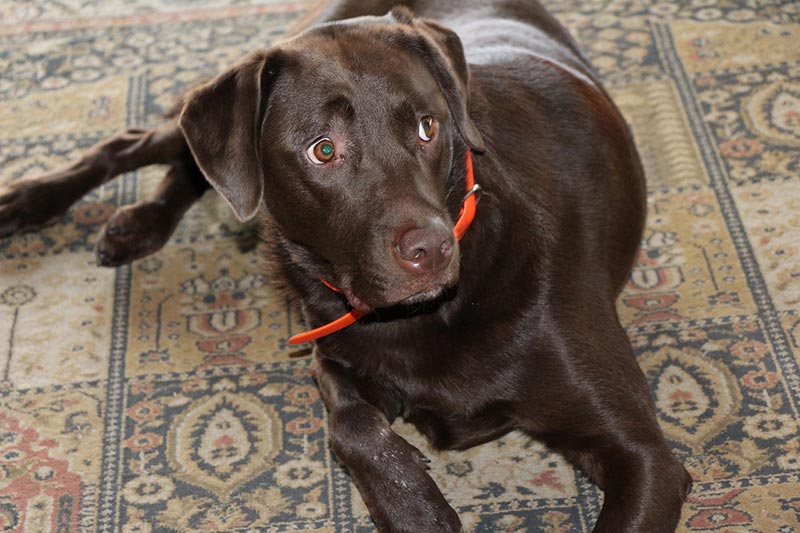Will Calming Collars Work for Dogs? What You Need To Know!

Updated on

Many dogs suffer from anxiety. Anxiety can manifest in many forms including excessive barking, aggressive behavior, incessant licking, and trembling. Anxiety in dogs can cause destructive behavior, poor health, and stress for the pet owners. In response, many dog owners have looked for solutions to help their pets through challenging times.
One solution that comes up often is calming collars. These collars claim to work and promise instant results if you just buy their product and put it on your dog. But do calming collars actually work? How are they supposed to work? Is there any data to support the claims made by these companies pushing calming collars for pet owners?
This article consults scientific studies and veterinarians to get to the bottom of whether calming collars actually work for dogs.
The Mechanism
Calming collars work on the principle of using dog-appeasing pheromones to calm dogs down. Dog appeasing pheromone, or DAP, is designed to release a calming chemical that works on a dog’s brain to reduce anxiety. Calming collars are infused with DAP. When a dog wears a calming collar, they should get a constant stream of calming pheromones that helps keep their anxiety at bay.
Pheromones work by entering the dog’s nose and affecting the brain. Pheromones are completely natural, and they are given off by many different sources in the wild. Calming collars hope to replicate these pheromones by releasing them close to a dog’s nose.
However, the study of pheromones still has some gaps in it. The mechanisms behind why and how pheromones work is not fully understood. Some dogs react to pheromones differently than others. Some dogs seem immune to the effects of pheromones in general. That means that the results from using pheromones on dogs are mixed.

What The Data Says
There are two studies available to the public regarding the use of DAP on dogs to reduce anxiety. The first study featured beagles being introduced to DAP in order to try and reduce anxiety onset by noise. The beagles were played sounds from a thunderstorm and observed with and without using DAP. The results of this study were positive. The conclusion said that there was enough data to support prescribing DAP to help reduce noise-induced anxiety in dogs.
The second study examined the effects of DAP on dogs who were hospitalized. The second study’s results were more mixed. The discussion questioned the size of the study and the potency of the results. In the case of hospitalized dogs, DAP still had positive effects, but the effects were more muted. Also, it was hard to tell if the use of DAP on regular dogs in a normal environment would still hold up compared to dogs in a stressful environment like the hospital. The second study says that DAP worked best for separation anxiety and related behaviors.
- DAP is used in calming collars to help quell anxiety.
- DAP was found to help reduce the effects of noise-induced anxiety in beagles.
- DAP was found to have a marginally positive effect on stressed dogs contained in a hospital environment.

What Veterinarians Say
There is some anecdotal evidence to suggest that calming collars work for some dogs. Rover.com quotes a veterinarian that says that he has had success in using calming collars to treat multiple different types of anxiety, including noise induced anxiety and aggressive tendencies.
The veterinarian we spoke to said that most calming collars don’t work. The only calming collar she found that works and is backed up by hard data and scientific studies is ADAPTIL. Outside of that particular collar, she did not suggest any other calming collars. In fact, she suggested using other methods to help quell canine anxiety before using calming collars. Other methods, such as changing a dog’s environment, working on training, and using proven anxiety medications, are often more effective than a calming collar.
Conclusion
Calming collars will work for some dogs, but they are not a completely reliable way to cure canine anxiety. Some dogs will respond very well to the DAP featured in most calming collars, but not all of them will. Calming collars seem to work best for anxiety induced by noise, such as fireworks and thunder. Calming collars will not work on social anxiety or behavioral anxiety. Most veterinarians agree there are some benefits to be had from calming collars, but they are not a solution for every dog or every pet owner. If you have questions about your individual dog, consult your veterinarian for more precise guidance.
Featured Image Credit: sandid, Pixabay










